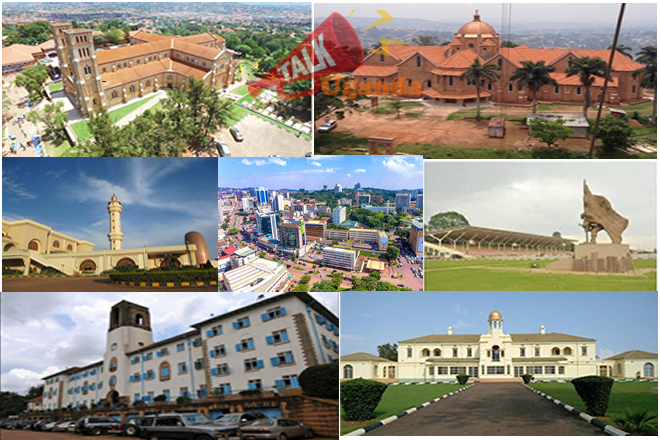Roma is a city known to be built seven hills, however, Kampala city the capital of Uganda as well holds the ancient legendary tales of being built on the seven hills.
The British colonial masters when where establishing Kampala as a capital, selectively choose to consider the 7 iconic hills to build this beautiful city and described it as “a very beautiful, legendary city built on seven hills like ancient Rome.”
Ironically, the seven hills of Kampala are a very significant consideration in many aspects of the country of politics, religion, culture, education, and business. Broadly, Kampala city is the administrative and commercial capital of the country, and today, the city has grown to spread to more than 21 hills.
In sections, the city was established on hills and extended started growing from the foothills geographically being swampy areas where the Impala and several antelope species used to graze from. It’s a reason behind Kampala being hills occupied by impalas naming the “hill of Impalas” (Akasozi Ka Mpala) from the ‘Luganda’ translation.
The expansion of Kampala has confused a number of authors when noting the 7 seven hills of Kampala and ended up sullying the list with foul indications. Though some of the mentions are close to the city center but are not among the seven hills rather are mentions of the 21 hills lists including Kasubi, Kibuli, Nsambya. So, should be very careful when mentioning these hills.
The Iconic Seven Hills of Kampala
Nakasero Hill
Nakasero hill is ironically known as the national administration and commercial hill of Uganda, the hill hosts the State House, National Legislation home, the judiciary headquarters, the central bank (Bank of Uganda), and many considerations consider Nakasero hill their foundation. Many of the commercial headquarters at the hill and business center is established just at the foothills of Nakasero hill. This started as an expansion from the first city at Old Kampala and was established as a residential area for the colonial governments before independence. It’s a shopping hill for all classes of people, however, the hill is separated into the uptown and downtown then spreading to other hills.
Kololo Hill
This is mainly the high-end residential hill zone, it’s a monumental hill for the independence of Uganda with the independence grounds. The hill is situated in the northeastern of the city center decorated with high-end residential details of shopping, apartments, hotels, and dining and clubbing spots.
Mengo Hill
The capital of Buganda Kingdom, hosting the main kingdom palace (Mengo Palace). The growth of Kampala capitalized on the Mengo palace being the headquarters for the Buganda Kingdom which was very iconic as far as the growth of Uganda is concerned. The hill is located southwest of Kampala city center, it derived its name from the legendary grinding stones (Emengo) in Luganda which were many at the hill and the King named it Mengo hill.
Old Kampala
The first Kampala was the first colonial administrative center to the IBEACO under the lead of Captain Fredrick Lugard who established his headquarters in Fort Lugard in 1890. Today, what represented the remains of Fort Lugard was removed and shifted to the lower slopes of the hills which the Fort Lugard museum under the management of Buganda Kingdom. The Old Kampala hill is significant to the Islamic community harboring the biggest mosque in East Africa which was constructed by Libian former president Muammar AL- Gaddafi in 2007 and named after him Gaddafi National Mosque and is the headquarters for the Islamic in Uganda.
Lubaga Hill
Rubaga/ Lubaga hill is a very iconic hill for the catholic community in the country hosting the main dioceses for the Catholic Church in Uganda. Following an invitation by Kabaka Mutesa 1, in 1879, the French Catholic Missionary followed the Church Missionary. On arriving, the Kabaka Mutesa I surrendered his hill of residence (Lubaga Hill) to the catholic missionary where they established their first church in the country to date. The prominent Lubaga cathedral was established first in 1914 and concreted in 1925, and the building kept on changing its structures not until current architecture. As well the church established a healthy facility Lubaga Hospital and the hill belongs to the catholic community.
Namirembe Hill
Likewise, Namirembe Hill belongs to the Anglican Church (Church of Uganda). This was occupied first by the church missionary society which came into the country in 1976, and on the peak of the hill is the iconic Namirembe cathedral. Namirembe is situated western of Kampala capital, this hill belonged to the Buganda kingdom which gave it to the church missionary society to establish their church. The present cathedral is a 4th generation structure as structures have been struck by various calamities including thunder until the permanent structure was established but maintaining the same architectural design.
Makerere Hill
This hill is located in the northwestern of Kampala city center, this hill belonged to Buganda and Prime Minister Nsibirwa gave the land to the colonial masters to establish a technical school in 1921. Today Makerere hills is an iconic education hill hosting one of Africa’s major education facilities the Makerere University. Makerere University for decades was East Africa’s leading university and African leading university in research.








